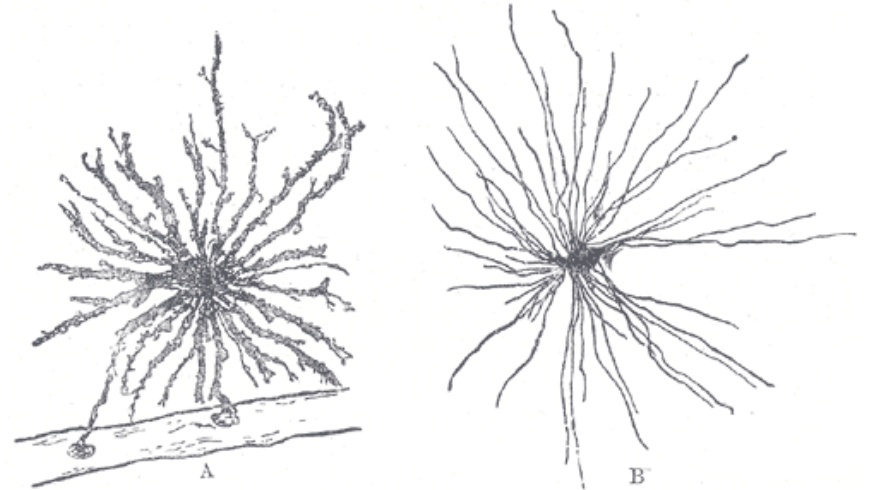-
More than glue: Glia cells found to regulate synapses | KurzweilAI
-

Glia cells: the brain's supervisors (credit: Gray's anatomy/Wikimedia Commons)
Glia cells are central to the brain’s plasticity, Tel Aviv University researchers have found, controlling how the brain adapts, learns, and stores information — and their design can be implemented in neuromorphic computer chips.
Glia cells (Greek for “glue,” also known as glial) hold the brain’s neurons together and protect the cells that determine our thoughts and behaviors. But glia cells have now been found to do much more: a mechanism within the glia cells also regulate the synapses, sorting information for learning purposes, according to Ph.D. student Maurizio De Pittà of TAU’s Schools of Physics and Astronomy and Electrical Engineering.
“Glia cells are like the brain’s supervisors. They control the transfer of information between neurons, affecting how the brain processes information and learns.”
De Pittà’s research, led by his TAU supervisor Prof. Eshel Ben-Jacob, along with Vladislav Volman of The Salk Institute and the University of California at San Diego and Hugues Berry of the Université de Lyon in France, has developed the first computer model that incorporates the influence of glia cells on synaptic information transfer.
The model can also be implemented in technologies based on brain networks such as microchips and computer software, Prof. Ben-Jacob says, and can aid in research on brain disorders such as Alzheimer’s disease and epilepsy.
-
-
Learning at a snail’s pace to enhance memory | KurzweilAI
-

The stimulus timing pattern that maximized the peak level of memory in a snail consisted of non-uniformly spaced serotonin (5-HT) applications with interstimulus intervals of 10, 10, 5 and 30 min. "Inducer" is a variable representing the synergistic interaction between two proteins (PKA and ERK) associated with memory. (Credit: Yili Zhang, et al./Nature Neuroscience)
University of Texas Health Science Center at Houston (UTHealth) neuroscientists used the sea snail known as Aplysia californica to test an innovative learning strategy designed to help improve the brain’s memory, with encouraging results.
The research could ultimately benefit people who have impairments resulting from aging, stroke, traumatic brain injury, or congenital cognitive impairments.
Building on earlier research that identified proteins linked to memory, the UTHealth researchers created a mathematical model that tells them the temporal pattern (timing) of the activity of these proteins for the best learning experience. Using this model, the computer sorted through 10,000 different permutations to determine a schedule that would enhance memory.
-
2011年12月30日星期五
SocialPipeline 12/31/2011 (a.m.)
订阅:
博文评论 (Atom)
没有评论:
发表评论